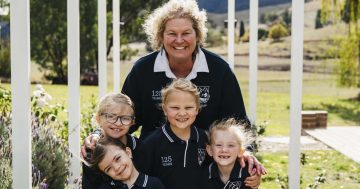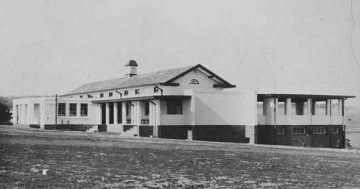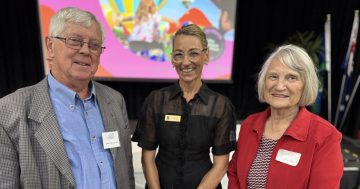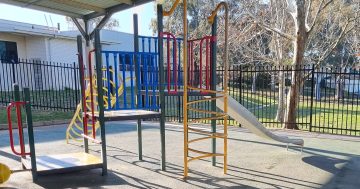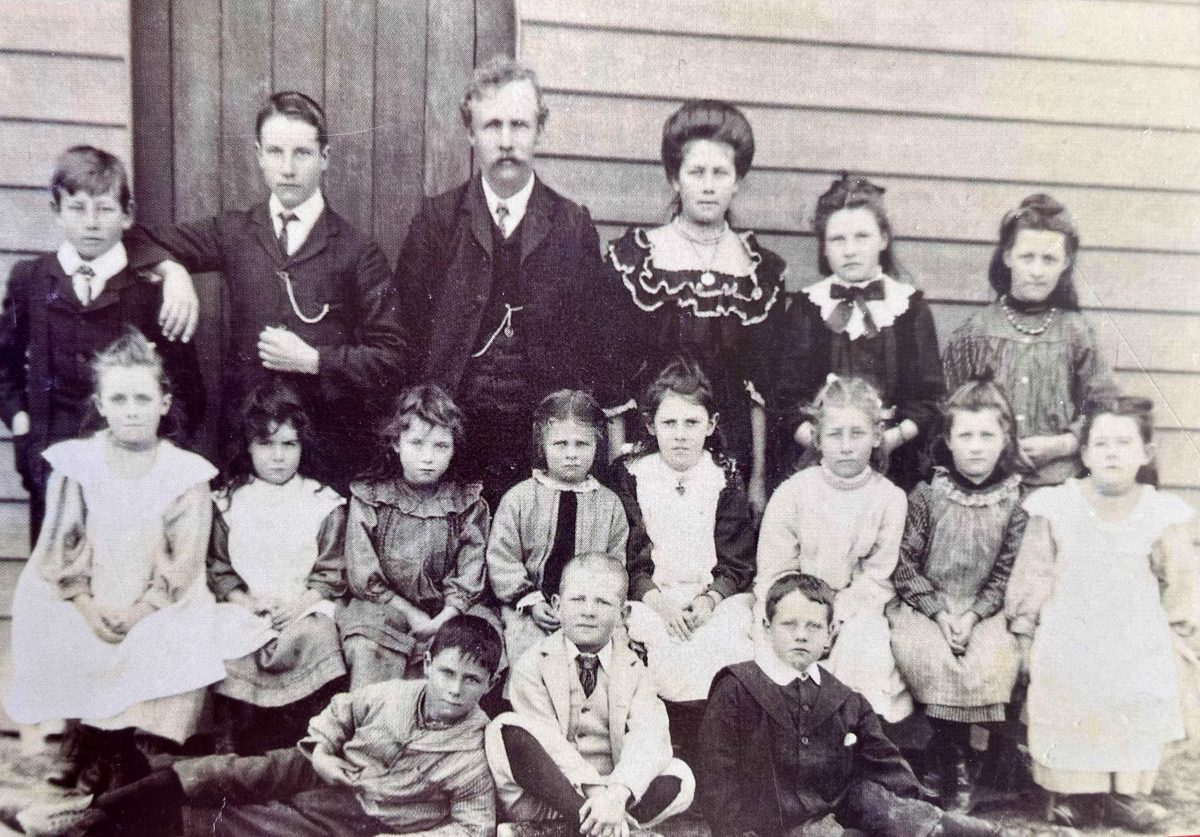
The 1908 official Tharwa Public School photo – the first year the school operated full time. This year marks the 125th anniversary of its opening. Photo: Supplied.
When Peter Henry was principal of Tharwa Public School, his job description included just about everything. Being in charge, teaching, admin work – and sometimes “I was also the janitor,” he joked, ”because there wasn’t anyone else.”
That’s how it was in small country schools back in the day, and that’s why Peter spent 12 such happy, constructive years there.
This month (August) marks 125 years since the first students were enrolled in the tiny rural school in 1889.
Although it has gone through several iterations – from slab hut to bits added over the years – the school was an integral part of the community from day one until it closed in 2007, along with a swathe of other schools throughout the ACT.
But for its principal from 1993 to 2004, Peter Henry, it was more than just a school, or a job.
“It was a real community here,” he said. “It had always been my dream to come to a country school. There was something special about it. I guess I like the idea of doing so many different jobs.”
Peter, former students, parents and staff are organising a special event to mark the 125th anniversary, scheduled for 18 August.
The plan is to welcome back as many people, with a connection to the school, as possible, to reminisce. Although some of the families have moved away, many are still in the region – those are the folk Peter and the team are keen to see take part in the celebrations.
Erected in 1889 where the Tharwa Preschool is now, the school catered for thousands of children during its lifetime. Many pupils came from farms and travelled to and fro via horseback.
“Back then, it was little more than a slab hut built with local labour,” Peter said. “Apparently, it was very cold in winter and hot in summer.”
With Tharwa proclaimed a village in 1863, by the turn of that century, about 250 people were living in the area. It partnered with other schools part time, including Naas (1905) and Tuggeranong (1907), before going it alone full time in 1907. It closed for two years in 1924, with children taken to Tuggeranong, reopening as a provisional school thanks, in no small part, to the large Thomson family.
It had always been a special school, Peter said, a school that offered a different kind of education for its charges.
“I remember one boy who was a nightmare in the city school he was in, but when he came out to Tharwa he started to do really well and ended up mentoring other children,” Peter said.
“At a school like this, you become really immersed in the community. I suppose it can be a two-edged sword because when things go wrong, everyone is incredibly supportive, but the other side is you can never escape anything because people know where you live,” he laughed.
“As principal, you really needed to be involved with everything that was going on in the village – that’s what the former principal told me when I took over, like joining the volunteer bushfire brigade, which I did.
“It was hard sometimes. But I never did quite understand why they closed the school in 2007. We were a small school with 27 or 28 in the classes. Our numbers fluctuated a bit, but we had a lot of people coming to Tharwa because not all kids do well in big schools. Parents wanted this different sort of education for their children. We always thought we were safe from closure.”
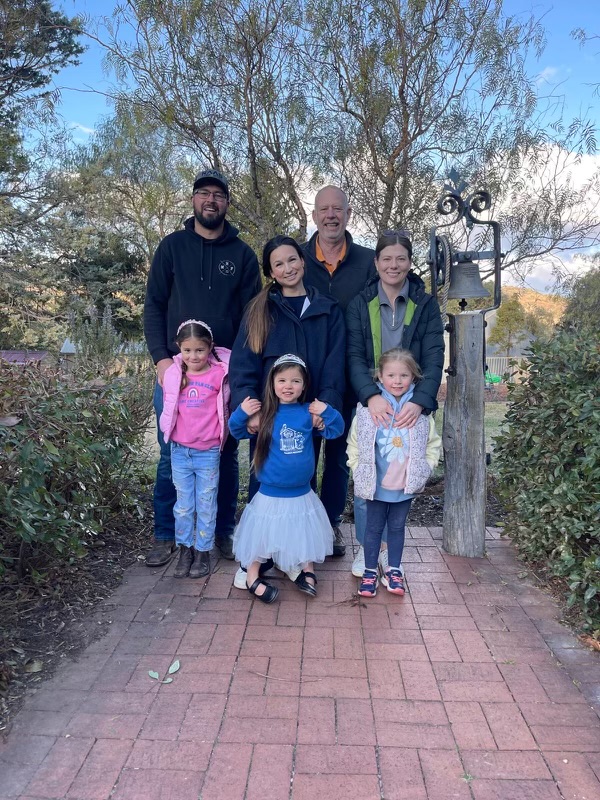
Former Tharwa Public School principal Peter Henry (right) with long-time Tharwa resident and former student Peter Gregory, former students Bella Gay and Jenna Hogan and their children, also students Olive, Gigi and Ivy with the original school bell. Photo: Supplied.
At its height, the school had three classes, preschool, kindergarten and an older class. Records show up to five generations of the same family going through the school.
After the school closed, the ACT Heritage Library was approached to care for much of the documented history of Tharwa Public, which it does to this day.
Such historical material will be on show during the 125th celebration on Sunday, 18 August, from 1 pm.
There’s also likely to be a little side project on the day – finding the time capsule that was buried when the school marked its centenary in 1999. Despite best efforts, it is still underground, somewhere.
Former teachers, students and friends of Tharwa Public School who are keen to help mark its 125th year can email Peter Henry at peter.henryedu@gmail.com.
Original Article published by Sally Hopman on About Regional.


 It would be great if there could be some research into methods to make…
It would be great if there could be some research into methods to make… 









